DESALINATION
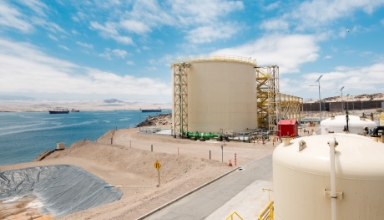
Water Storage
Specialized storage tanks hold seawater before processing. These tanks are designed to handle large volumes of brine and withstand salty air without corroding.
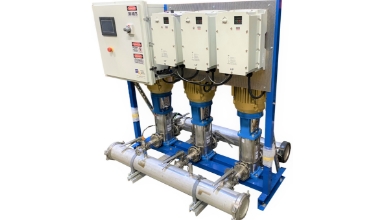
Feed Pumps
High-pressure feed pumps force seawater through membranes in the treatment system. Advanced Equipment and Services offers configurable skid-mounted pump systems for precise, space-saving operation.
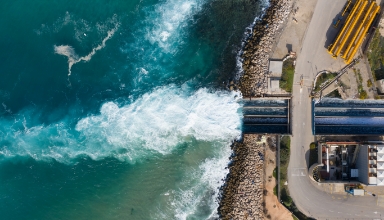
Seawater to Be Treated
Nearly 97% of Earth’s water is saline, so desalination is a critical technology for meeting global water needs, especially in arid, coastal, or isolated regions. The process starts by drawing in seawater to be purified and prepared for treatment.
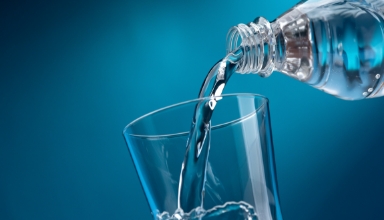
Potable Water
The result is clean, safe drinking water for homes, businesses, and industrial settings, including resorts, hospitals, and municipal supplies.
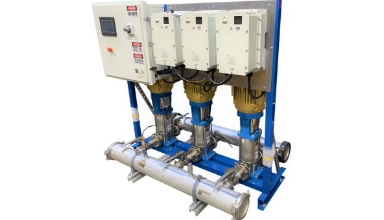
Permeate Pumps
Permeate pumps use hydropower from the wastewater to push treated water (permeate) into the storage tank. This type of pump boosts system efficiency by reducing back pressure on reverse osmosis membranes, conserving water and energy.
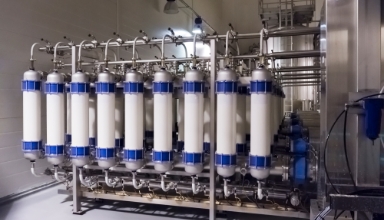
Ultrafiltration System
Ultrafiltration membranes remove suspended solids, bacteria, and some viruses, producing high-quality feedwater for reverse osmosis. This pretreatment step is vital for protecting downstream equipment.
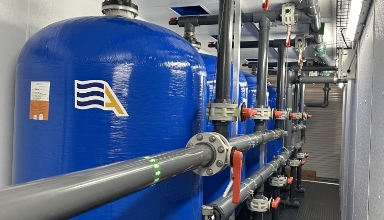
Automatic Multimedia System
Multimedia filters use layers of filtration media to trap fine particles, improving water clarity and protecting reverse osmosis membranes from fouling.
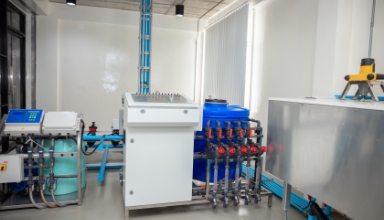
Chemical Injection Systems (Bisulfite and Antiscalant)
Bisulfite neutralizes chlorine to prevent membrane damage, while antiscalants reduce mineral scaling inside the system to maintain optimal water flow.
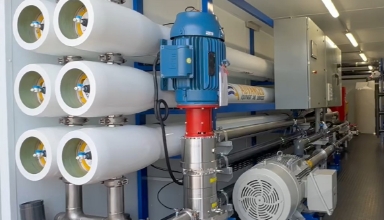
Reverse Osmosis System – High Recovery Rate
Reverse osmosis membranes remove up to 99% of total dissolved salts and impurities, producing fresh, clean water with a high recovery rate for maximum efficiency.
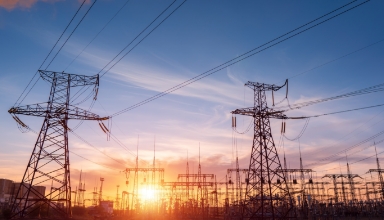
Dual Energy System Option
Hybrid energy setups combine solar power with the electrical grid, ensuring uninterrupted desalination even in variable weather conditions.
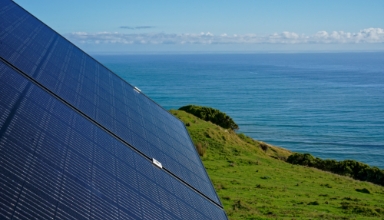
Solar Systems Option
Solar-powered desalination systems reduce dependence on the electrical grid, making clean water production more sustainable and cost-effective. Solar systems are especially ideal for disaster relief and remote, off-grid operations.
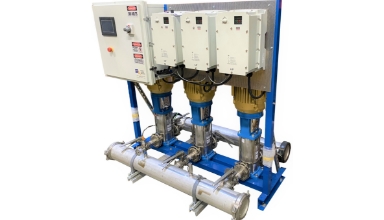
Backwash Pumps
Backwash pumps flush filtration media, removing trapped particles. This restores full functionality of the filter and extends the life of the filtration system.

Chemical Injection Systems (Cl₂, NaOH, Acid, Inhibitor)
Post-treatment chemical dosing disinfects water, adjusts pH, and adds inhibitors to protect distribution systems from scaling and corrosion.
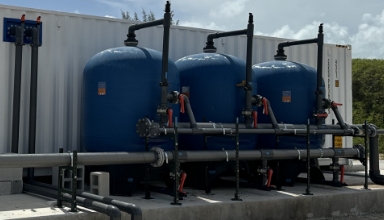
Calcite Remineralization
After reverse osmosis, desalinated water is slightly acidic and corrosive. The treated water is passed through calcite media to restore essential minerals like calcium, improving taste and preventing corrosion in pipelines.
WHAT IS DESALINATION?
It’s the process that removes dissolve salts from raw water or seawater, reducing the Total Disolved Solids (TDS) concentration to a minimum so it can be used for residential, commercial or industrial applications.
We can classify water by TDS concentration using the following rule:
- Freshwater – Less than 1,000 ppm
- Slightly saline water – From 1,000 ppm to 3,000 ppm
- Moderately saline water – From 3,000 ppm to 10,000 ppm
- Highly saline water – From 10,000 ppm to 35,000 ppm
Ninty seven percent (97%) of the world’s water is “saline”, to put that in perspective, according to the United States Geological Survey (USGS) there is approximately 324,088,000 cubic miles of saline water in the world, and the water consumption in 2010 was near 960 cubic miles.
“The scarcity of freshwater resources and the need for additional water supplies is already critical in many arid regions of the world and will be increasingly important in the future. Many arid areas simply do not have freshwater resources in the form of surface water such as rivers and lakes. They may have only limited underground water resources, some that are becoming more brackish as extraction of water from the aquifers continues.” USGS
HOW DO YOU DESALINATE WATER?
There are mainly two physicals phenomenons that can help us desalinate water:
- Evaporation (Distillation)
Heating water causes a change of the physical state from liquid to gas and therefore a separation from dissolve solid (that precipitate)
- Reverse Osmosis (RO)
It is a water treatment method that uses the physical phenomenon of osmosis to generate fresh water (product) with a low concentration of total dissolved solids (TDS).
By creating a pressure differential in a semi-permeable membrane large enough to reverse the osmosis process a liquid can be saturated with dissolved solids (rejection) and thus obtain the product water with a low TDS content.

WHY DESALINATION WITH REVERSE OSMOSIS?
The fresh water needs in the world are increasing exponentially over time, thus people needs better and better solutions that can solve this problem.
WATER QUALITY
A typical reverse osmosis membrane can filtrate up to 99% of the TDS contained in the water.
SPACE AND TIME EFICIENT
A desalination plant mainly consist of pressure vessels arrays that can be arrange in very efficient space modules and in very little time.
ENERGY EFFICIENT
The equipment used in a desalination plant are engineered to take a full advantage of the energy supply. High efficiency pumps, energy recovery devices (ERD) and solar systems makes the RO industry a go-to in water treatment.

OUR SOLUTION
Typically we recommend the following steps:

Complete flowchart for desalination below showing the ADVANCEES systems. This flowchart vary based on raw water quality and customer’s requirement. Many options and combinations are possible, the best solution needs to accommodate the minimum life cycle cost such as low operating cost, low maintenance, easy to operate and monitor.
Desalination Process:
Desalination transforms seawater into fresh, drinkable water through a series of precise, highly engineered steps. From initial seawater intake to final mineral balancing, each stage uses specialized equipment to ensure water purity and safety. Click on each module below to explore how industrial and commercial desalination machinery from Advanced Equipment and Services, Inc. turns saltwater into dependable potable water supplies.
What makes water saline?
Saline water has large levels of dissolved salts (referred to as “concentrations”). The concentration in this context is the quantity of salt in water (by weight), given in “parts per million” (ppm). If dissolved salts are present in water at a concentration of 10,000 parts per million (ppm), dissolved salts account for one percent of the water’s weight.
THE BEST DESALINATION PROCESS
Desalination removes salt and other impurities from seawater, transforming it into freshwater for drinking, irrigation, and industrial use. As population growth, urbanization, and climate change intensify global water scarcity, desalination plays a critical role in providing reliable, sustainable water supplies.
A Brief History of Desalination
While ancient civilizations used distillation to produce freshwater from seawater, the modern era of desalination began in the mid-20th century. Technological advancements and rising demand in arid regions drove the evolution of efficient, large-scale desalination systems.
Main Types of Desalination Technologies
- Thermal Desalination
Involves heating seawater to create steam, which is condensed into freshwater. - Membrane Desalination
Uses semi-permeable membranes to remove salts and impurities without heating the water.
Reverse Osmosis (RO)
Multi-Stage Flash (MSF) Distillation
Multi-Effect Distillation (MED)
Electrodialysis (ED)
Capacitive Deionization (CDI)
Hybrid Desalination Systems
Challenges and Environmental Considerations
- Energy Consumption: Desalination is energy-intensive, often relying on fossil fuels.
- Brine Disposal: The by-product of desalination can harm marine ecosystems if not properly managed.
- Cost: While prices are falling, desalination remains more expensive than conventional water sources.
